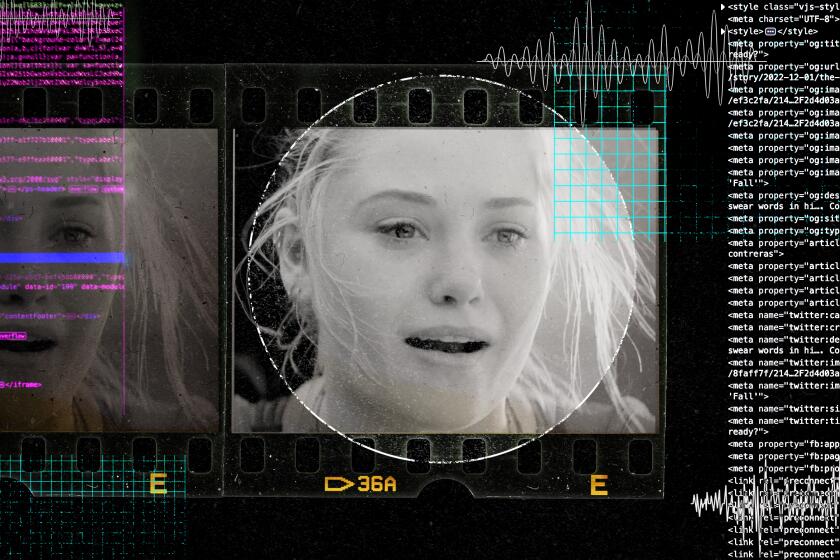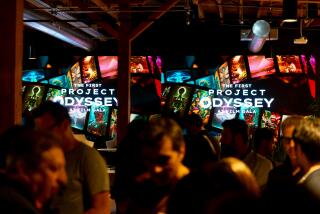James Cameron looks back into ‘The Abyss’ 34 years later
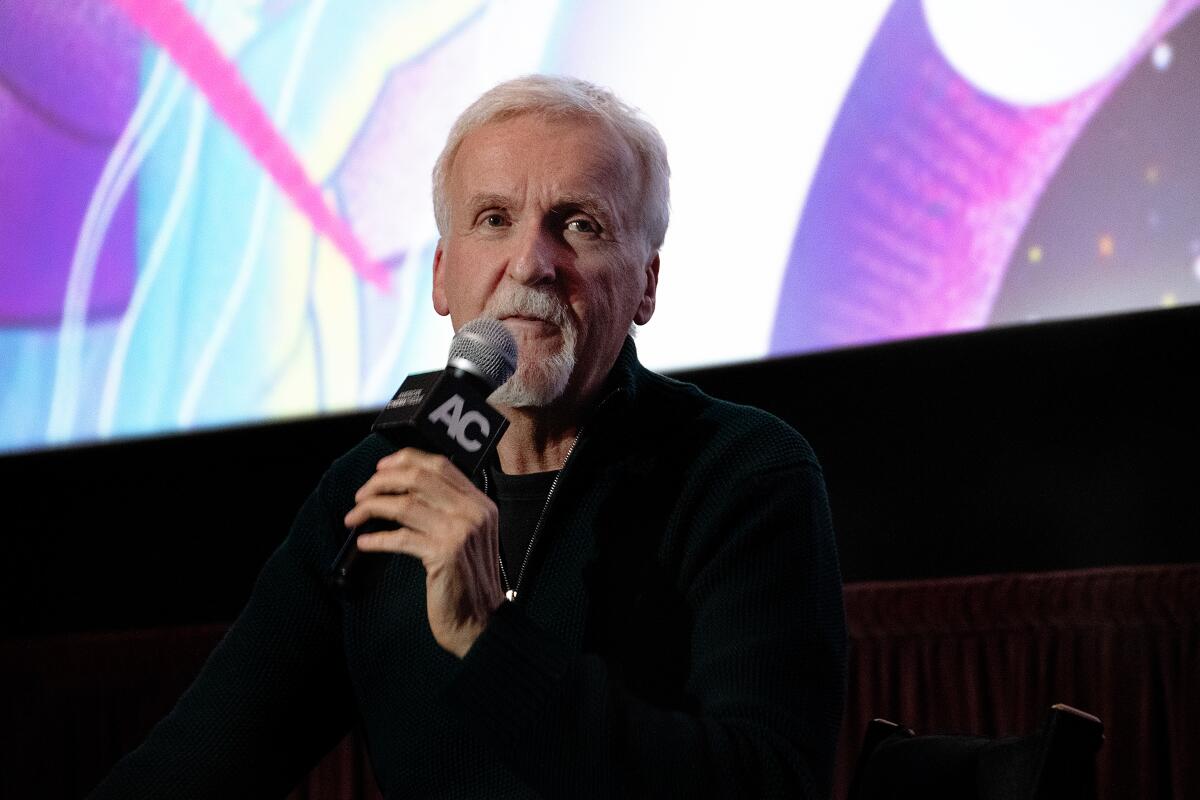
- Share via
When James Cameron gazes long into his groundbreaking 1989 film “The Abyss,” his “Abyss” also gazes back into him. He sees it as a director and deep-sea explorer now 34 years wiser, one who is reminded of how far he’s come, from Pandora to the Mariana Trench.
“I look at it from the perspective now of having been not only to the abyss, but to the depths much deeper,” the Oscar-winning filmmaker told The Times on Wednesday night at Beyond Fest, in partnership with the American Cinematheque, where a restored version of the extended 171-minute special edition screened to a rapturous sellout crowd at the Regency Westwood Village. “I also think about how I was five years into my directing career at that point,” he said. “I like to think I’ve learned a few things.”
Following his breakout sci-fi classics “The Terminator” (1984) and “Aliens” (1986), Cameron was making his fourth career feature at the age of 34 when he directed a cast led by Ed Harris, Mary Elizabeth Mastrantonio and Michael Biehn in the tale of an undersea oil rig crew tasked with salvaging a nuclear sub.
Filmed in massive water tanks constructed in an abandoned power plant in Gaffney, S.C., “The Abyss” saw Cameron experimenting with technology and processes he’d later build on to make “Titanic” and “Avatar” at a much larger scale. Famously grueling to produce, with cast and crew submerged in diving suits for long hours at a time, the $42-million underwater thriller was considered a box-office disappointment at the time, grossing $90 million upon release, but won an Academy Award for visual effects, also landing nominations for art direction, cinematography and sound.
And, Cameron told the Beyond Fest audience during the post-film Q&A, it also nearly killed him.
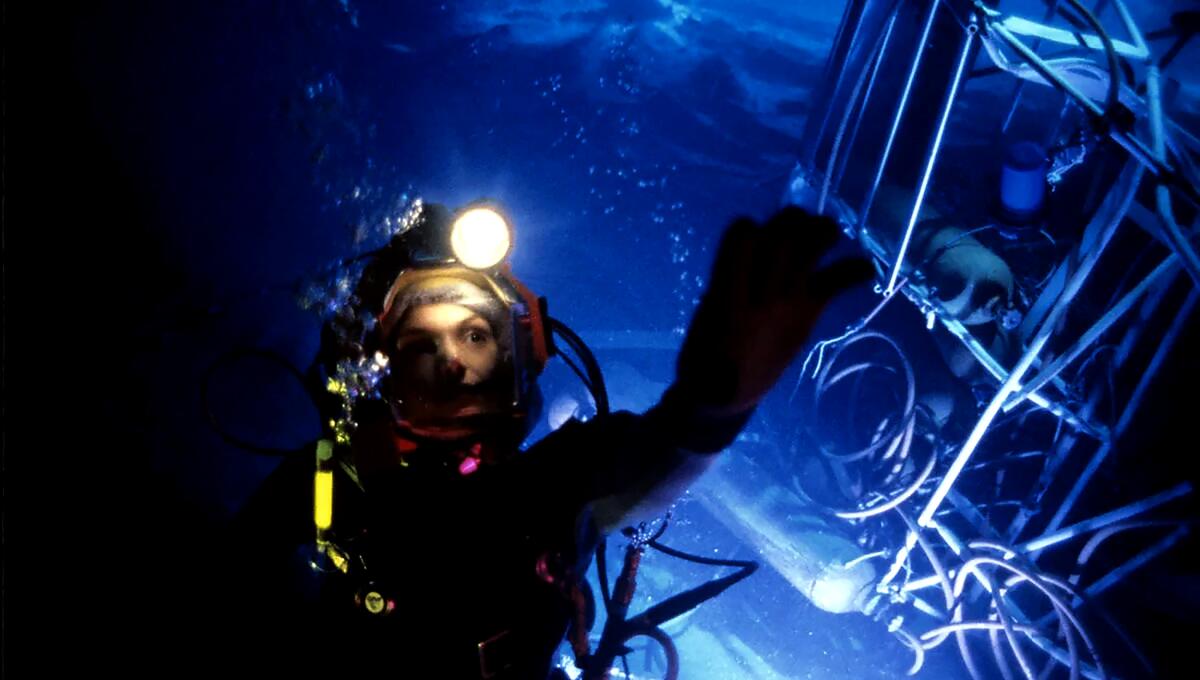
Out of air while 30 feet down with weights around his belt, Cameron came dangerously close to drowning in a water tank when a regulator failed and a safety diver, unaware of the malfunction, held him beneath the water to prevent him from risking lung rupture on his ascent. “So I punched him in the face,” the director said to raucous applause, “and therefore survived.”
In a discussion with filmmaker and historian Jim Hemphill, Cameron spoke of the film’s groundbreaking use of CG in its pseudopod scene and the arduous undertaking of shooting through lightning storms and mental and physical strain. He shared how real submerged rats breathed oxygenated fluorocarbon onscreen to demonstrate fluid breathing — which Harris later simulated in a helmet filled with water — and the influence of 1951’s “The Day the Earth Stood Still”: “It asked the question, are we worthy, if we were to be judged by a higher intelligence?” the director said.
For once, a studio’s boasts about a film’s authenticity are not exaggerated.
Over the years, however, Cameron has described “The Abyss” as one of his career failures, a distinction he considered as he sat briefly in the theater lobby before peeking in at the audience inside.
“I didn’t quite achieve what I wanted to achieve, what was in my mind,” he said of the theatrical version, which he said was whittled down to cater to test-screening reactions. “But I don’t think I could have done ‘Titanic’ if I hadn’t been through the process on ‘The Abyss.’ I’m talking about understanding where the beating heart of a movie lies and not getting distracted by the imagery.”
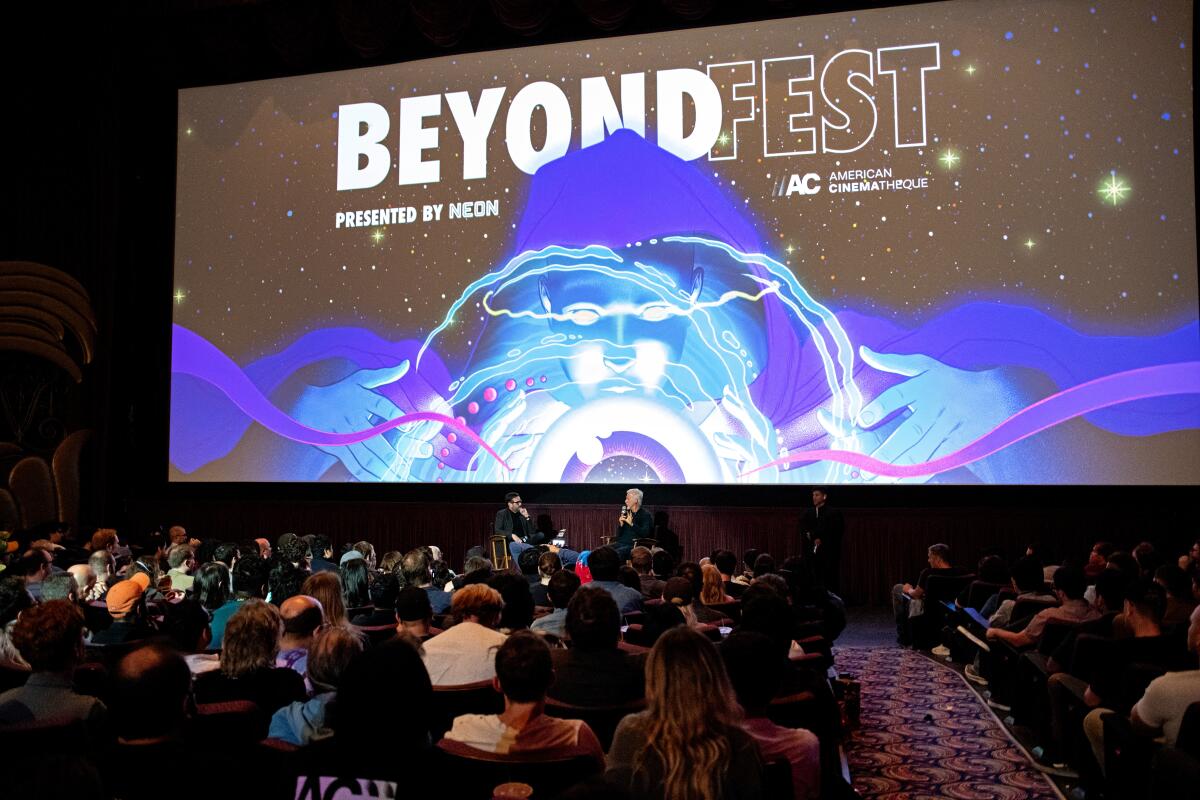
Cameron rarely re-watches his own films, even if he can remember details from his movie shoots — “where I put the camera, where I was standing, what was going on” — sometimes with more clarity than what was going on in his private life at the time. And he hasn’t forgotten the challenges of making “The Abyss,” an undertaking he says he wouldn’t have the energy to attempt today.
“I certainly couldn’t physically do ‘The Abyss’ right now,” he said. “We had a full 10 hours underwater per day, six days a week, for 10 weeks in a row. I don’t think I could pull that off. The actors felt like they’d been through the worst thing in their lives and they were in the water about one third of what me and the crew were.”
A few years after the original release, Cameron went back to fulfill his original vision, releasing the special edition in 1992 with a half-hour of additional minutes that expand scenes, character relationships and reinserts a third-act twist involving the NTIs (non-terrestrial intelligences) and the mysterious tidal waves that appear across the globe.
Cameron revealed to the crowd of 1,400 that the long-awaited 4K remastering he’s personally overseen has been completed and will be released on home video “in a couple of months,” sending titters of excitement through the audience. (According to a festival representative, the Beyond Fest screening was a restored version in 2K.)
An underrated cornerstone of the auteur’s career, “The Abyss” resonates with every boundary Cameron pushes in his cinematic and scientific pursuits. His fascination with the ocean, evident in his work leading up to last year’s aquatic-set “Avatar: The Way of Water” and the forthcoming “Avatar” installments, only grew after making “The Abyss,” when he made his own dives to nearly 11,000-meter depths, taking 33 trips to the wreckage of the Titanic. In 2012 he made a historic solo trek to the Challenger Deep, the deepest point on earth.
“You feel very remote from this world,” he says of his time plunging deep into vast oceans. “You realize that there are places on this planet that feel so alien, like another world.”
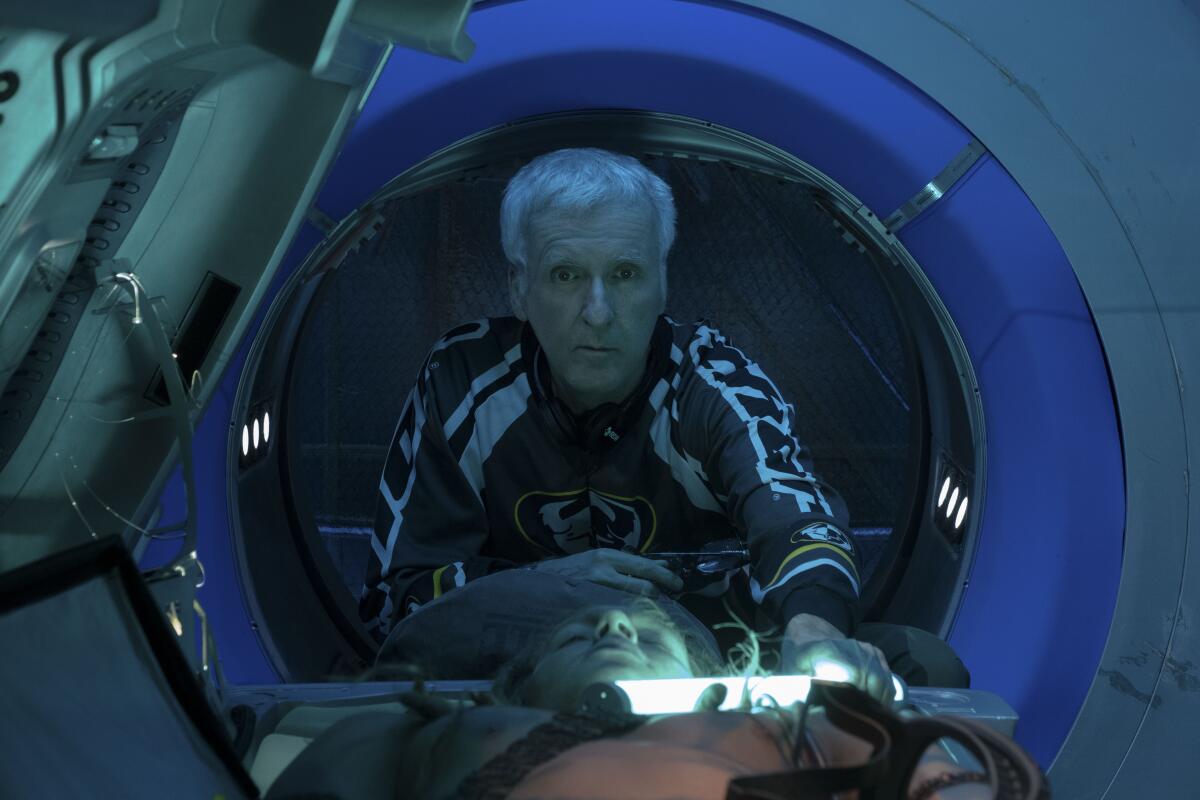
His second career as an undersea explorer made him an in-demand commentator after June’s OceanGate tragedy, in which five passengers, including Cameron’s friend and peer Paul-Henri Nargeolet, died when the unclassed Titan touring submersible they were aboard imploded.
The accident comes uncannily to mind revisiting “The Abyss,” in which a damaged submersible implodes after sinking beyond its crush depth. “It’s a real tragedy, but the essence of that particular tragedy was they didn’t follow warnings — they didn’t heed the warnings,” said Cameron, who says it has not deterred his intentions to continue his own deep-sea research. “Not at all, because I’ve dived three times that deep, safely,” he said. “I’d get back in the sub tomorrow and go to the bottom of the Challenger Deep.”
Hollywood’s favorite futurist has proved his prescience countless times; even his “Terminator” nightmare visions of a sentient artificial intelligence are now as timely as ever, in daily life and as a major battleground in the industry’s labor strikes. “We’re in the age of Skynet,” he said. “It’s getting very hard to write science fiction these days because it’s happening for real.”
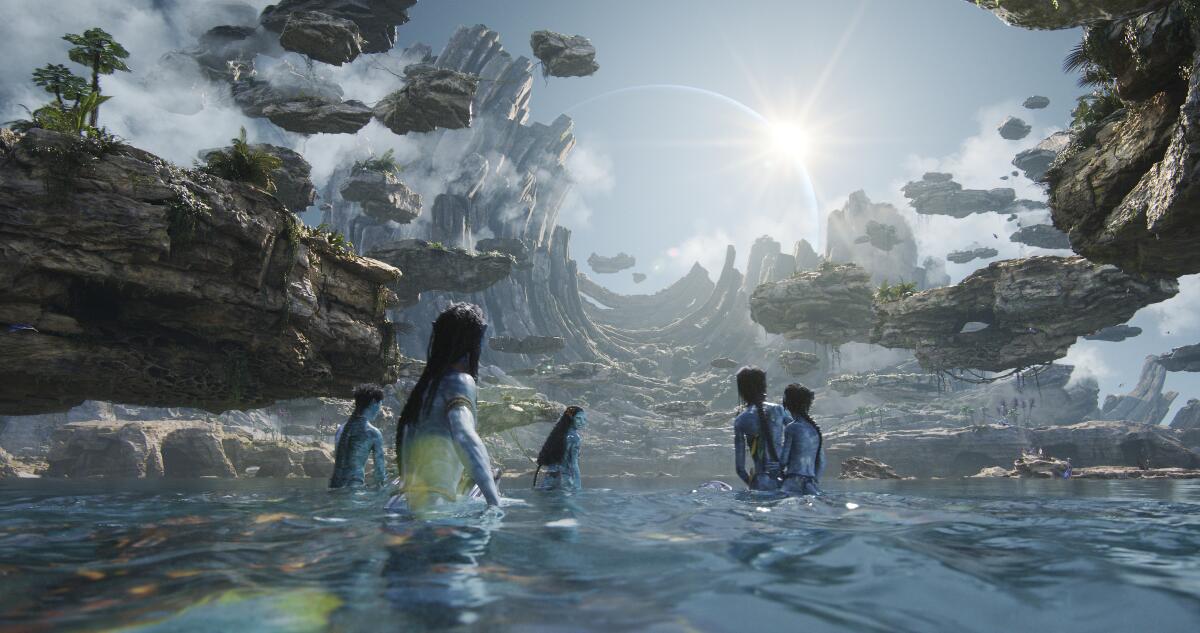
But while Cameron has expressed wariness where AI is concerned (“I warned you guys in 1984 and you didn’t listen,” he told CTV News in July), he’s also optimistic about how it could be used in the film industry — not to replace human creatives, but to make their jobs easier and more efficient via machine learning. In turn, he hopes, artists like himself will be able to make more movies. And in the short term he’s “excited” by that potential as he continues work on his “Avatar” films.
“We’ve used AI tools since we started ‘Avatar,’ but it’s machine deep learning,” says Cameron, who is implementing AI on the “Avatar” sequels, but not via the generative programs that many Hollywood professionals fear will eliminate their jobs. “Machine learning has a role to play. In terms of generative, we don’t do it. The images are computer-created, but they’re not AI-created. We have human artists that do all the designs. We don’t need AI.”
“Maybe other people need [generative AI],” he said. “We don’t.”
Director Scott Mann had an issue: too many swear words in his thriller movie. Could artificial intelligence help him get a PG-13 rating?
As for “The Abyss” and its otherworldly NTIs, Cameron firmly avows that he’s never dared to dream of encountering glowing aliens during his trips to the bottom of the ocean, even if recent headlines have stirred international hopes of E.T.s on earth. “Oh, the stupid mummy that was obviously completely fake?” Cameron says with a laugh. “That’s what they want you to believe!”
Yet as both scientific explorer and dreamer, his mind can’t help but follow the thread of possibility. It’s more likely we’ll someday learn of alien life on moons like Europa or Enceladus, Cameron mused.
“If you did want to hide out on planet Earth and put a base here, the best place to do it would be under the ice of Antarctica or in the hadal depths down in the trenches — because nobody goes there and we don’t have any monitoring, we don’t have any instrumentation, we don’t have anything down there,” the filmmaker said, eyes twinkling. “That’d be a good place to do it.”
More to Read
Only good movies
Get the Indie Focus newsletter, Mark Olsen's weekly guide to the world of cinema.
You may occasionally receive promotional content from the Los Angeles Times.
